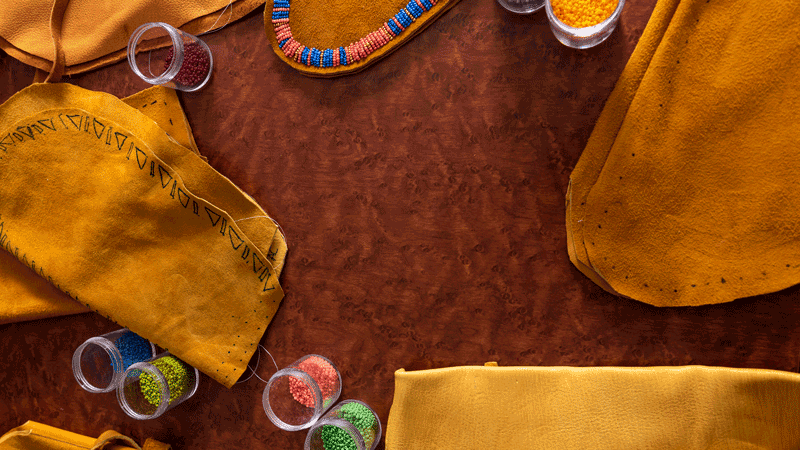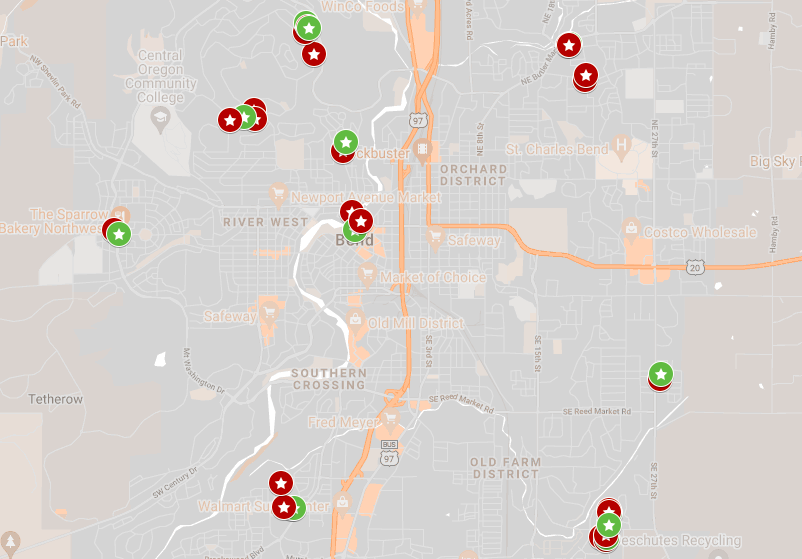Editor’s Note: The first part of this post is the printed version of our interview with David James Duncan, found in the March + April issue of Bend Magazine. Following, you will find the full interview.
As sure as waters flow, time marches on. In 2023, rivers and years intersect upon the 40th anniversary of the publication of The River Why, a novel that has become a dog-eared classic in fly boxes of fishermen and in libraries of those who love language, natural resources and life. The book was one of the San Francisco Chronicle’s “20th Century’s 100 Best Books of the American West,” and led to Duncan’s next works—the National Book Award finalist My Story As Told By Water, the bestseller and winner of the Pacific Northwest Book Award for nonfiction, God Laughs & Plays and The Brothers K, subject of the 2023 Deschutes Public Library’s “A Novel Idea.” His new novel Sun House will be published in August. Words between Bend Magazine’s editor and David James Duncan had him musing about his work and our larger relationship to rivers and to one another.
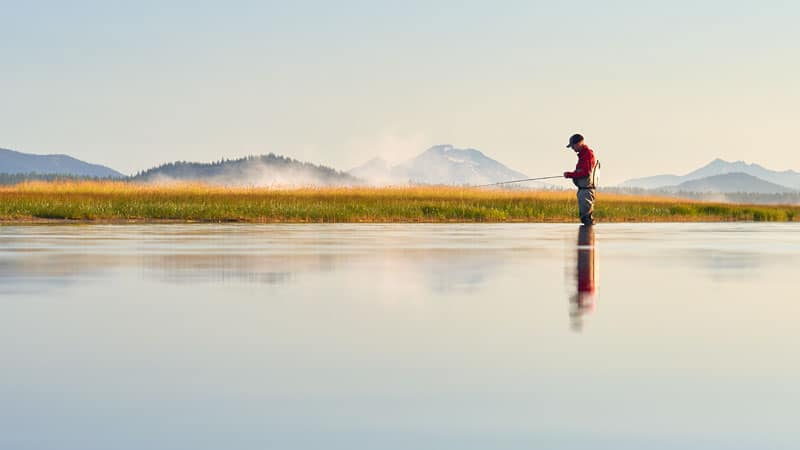
Cheryl Parton: It’s been forty years since its publication, and readers carry the image of Gus Orviston eking out those final forty miles to the headwaters of the Tamanawis. Anniversaries, milestones and mileposts equally show us where we are and guide us ahead. What can readers of The River Why learn today as much as from the first time they may have read the novel? Why do you believe it has been so timeless?
David James Duncan: Perhaps the timelessness of rivers rubbed off on the novel. I love Oregon rivers deeply, and stirred in my love for several favorite coast streams as I portrayed the Tamanawis. Rivers, more than any other geophysical feature, make Earth as richly habitable as it is, and if there is anything in my novel I hope readers today might hold on to, it’s that even rivers that have vanished behind dams don’t stay vanished, because no dam is forever. And even rivers that have dried up in the super-drought the West is suffering are the outcome of water’s ability to travel from ocean as saltwater into the sky as freshwater, travel inland, and return to Earth’s surface as rain and snow, every drop and melted flake of which is seized by gravity the instant it encounters a tilted surface, and away it goes! As rivers go on constantly renewing themselves, you can hear their rapids laughing at people who don’t believe in reincarnation! I’ve seen several streams pronounced dead come back to life. Because gravity sometimes sends water underground it also turns up in surprising places in surprising quantities. Central Oregon dwellers know how wonderful it is when hidden rivers like the Metolius, or Fall River, burst up out of the ground in a gorgeous spring. I also love the way water travels through space and, far more often than we can know, descends to Earth as an inexplicable bit of rain. And I was jazzed by the recent moon mission’s discovery of a lake in Clavius Crater! Those participating in Bend’s upcoming “A Novel Idea” might remember that a minor league baseball player in my novel, The Brothers K, claimed that the moon was once a living planet, and sings, “There’s a dead world on the rise,” to the tune of Creedence Clearwater Revival’s “Bad Moon Rising.”
In the end, I’d say a final reason why The River Why continues to be read is that, like Norman Maclean, millions of us are “haunted by waters,” and never more than now, when water feels so threatened, and so precious.
CP: In a way, it’s not only that water feels threatened and precious. It’s as though the challenges of the past several years have also threatened humans and their ability to connect to one another. What more did Gus learn, and teach us?
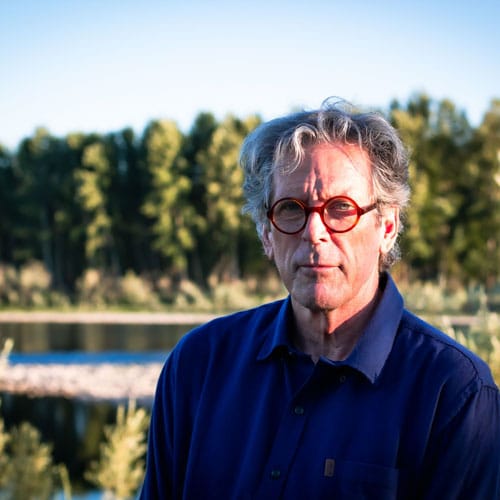
The day after I graduated from high school, my own spiritual searching led me to stay at a high lake in the Cascades for ten days, fasting for seven of them to try to erase all the useless crap I’d been exposed to in high school—and it worked, leading to a rebirth that probably saved my life by revealing my life’s work.
Speaking of that work: I’ve read countless op-eds calling for a massive change of consciousness if humanity is to survive, but no op-eds that depict what this change of consciousness might feel, taste, sound, smell and live like. Gus’s spiritual search was my first attempt to address this tragic void. My new novel, Sun House, devotes 357,000 words to what changes of consciousness feel, taste, sound, smell and live like as they lead more than a few people to a viable contemplative life. One such greenhorn is a comically over-enthusiastic young man named Grady who becomes smitten by mountains, feels they have profound things to teach him, and speaks of his need to launch a high elevation quest in this whacko phone call to his girlfriend:
“Come to terms with your Mortal Nobodyness, strip yourself down to your Ancient Animal Body and Ancienter Spirit Self, converse ye with the trees, weather, hoot owls, and desolation angels in their language not yours, and even you, Grady, can catch a whiff of the Old Ways and figure out who the Living World’s asking you to be.”
I consider Sun House’s Grady a sort of heir to The River Why’s Gus.
CP: Similarly, we are heirs of the Earth. The River Why and the awareness it brought to the impact of humans on beloved rivers illustrates the idea of how we can use our unique talents to affect change. For you, has that been through writing?
DJD: You ask if my activism has been through writing. Mostly yes, but I consider it vitally important for us to find ways to interact with rivers and streams, or soil and plants, or moss and sweetgrass like the wonderful Robin Wall-Kimmerer, in a hands-on, physical, loving way, so that intimacy and love inform our activism. It’s activism, for instance, that when I went fishing on my home Montana river one day and came upon the strewn garbage and forty-three empty beer bottles of what must have been a hell of a party, I did what I always feel called to do: spend fishing time packing the mess off to my truck to restore my house of worship’s beauty.
Another kind of “love and intimacy activism”: when West Coast streams drop after the high waters of spring, side channels become disconnected pools doomed to evaporate, leaving large numbers of salmon and steelhead fingerlings doomed. On the streams I have frequented, rather than feel helplessly depressed by this part of the natural cycle, I long ago purchased a long-handled minnow net and eight gallon plastic bucket, began enlisting the help of a local child or two, or child-like adult friends, and sought out these channels. My friends and I then stand at opposite ends of the long but narrow pools, and one team member hazes and herds the fingerlings the length of the pool, where the other teammate waits, net and bucket at the ready. After some scoopin’ and whoopin’ it’s incredibly satisfying to release a gob of marooned fingerlings back into their natal river, knowing a lucky few will return as salmon and steelhead the size of sleek silver dogs whose only leg, their tail, works better in water than any number of legs!
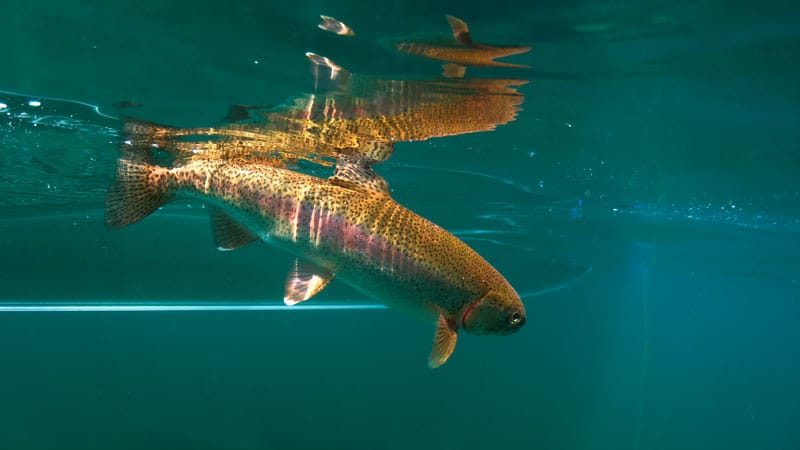
CP: “Love and intimacy activism,” and a bit of an adventure! You take readers along on the adventure through The River Why and The Brothers K, so we highly anticipate the release of Sun House this summer. Are there themes you continue? What should we pack in our “reader’s fly box?”
DJD: I’m more interested, these days, in the icons on my altar than the contents of my fly boxes. An unusual through-line in my life ever since I was twenty has been friendships with wonderfully wise older women. Feminine expressions of wisdom abound on my altar, from the first great female author in English history, Julian of Norwich, who wrote, “Just as God is our Father, so is God also our Mother,” to Muscogee Nation songbird and former U.S. Poet Laureate Joy Harjo, who wrote, “Remember the earth whose skin you are.” These voices escort us away from the toxic masculinity that has spewed its poisons over the Earth, its populace, and our politics. In reaction to that toxicity, one thing I very consciously do in Sun House is exclude the internet sub-realities and mind-traps that give voice to poison. I’m incredibly fortunate to be close to many women and some great but unsung men whose lives embody a depth of love and truth you seldom find referenced in mass media. That closeness leads me to believe there is a vital shift going on that grows ever more capable of addressing our biological and spiritual crises with the love and justice they demand. In Sun House, I pull out every stop I could get my heart and hands on in support of this shift.
CP: Is there something from your writing and/or life that you hope readers can learn by reading your novels?
DJD: My wise friend Barry Lopez felt that the great questions have no lasting answers, and if we confine ourselves to the limited powers of reason, I agree. But as an unreasoning but water-loving boy I began to find the Unanswerable to be a reminder that I was born lost, but in creeks and rivers began to be found. Watersheds remain a place of pilgrimage, rivers prayer wheels, wild salmon an interior compass, dammed or industrially-wounded rivers blues tunes, diminishing bird species dark prophets, and wild lives as unassuming as weeds blooming in the cracks of city sidewalks a momentary home.
Being alert to what our mother, this Earth, is serving up daily enables me to defy worry (which is just praying for what we don’t want) and refuse to be paralyzed by fear. In my fiction, I’ve tried my best to heed what the Earth and her “skin” are bestowing upon us. And it is unspeakably worth the effort when moments of attention on my part, or anyone’s part, unexpectedly explode, as they still sometimes do, into moments of inexplicable joy.
The above article was printed in the March + April issue of Bend Magazine. Below is the full interview if you would like to continue reading. – Cheryl Parton, Editor in Chief of Bend Magazine.
FULL INTERVIEW
What the River Says
A conversation with David James Duncan
As sure as waters flow, time marches on. In 2023, rivers and years intersect upon the 40th anniversary of the publication of The River Why, a novel that has become a dog-eared classic in fly boxes of fishermen and in libraries of those who love language, natural resources and life. The book was one of the San Francisco Chronicle’s “20th Century’s 100 Best Books of the American West,” and led to Duncan’s next works—the National Book Award finalist My Story As Told By Water, the bestseller and winner of the Pacific Northwest Book Award for nonfiction, God Laughs & Plays and The Brothers K, subject of the 2023 Deschutes Public Library’s “A Novel Idea.” His new novel Sun House will be published in August. Words between Bend Magazine’s editor and David James Duncan had him musing about his work and our larger relationship to rivers and to one another.
Cheryl Parton (Bend Magazine): It’s been forty years since its publication, and readers carry the image of Gus Orviston eking out those final forty miles to the headwaters of the Tamanawis. Anniversaries, milestones and mileposts equally show us where we are and guide us ahead. What can readers of The River Why learn today as much as from the first time they may have read the novel? Why do you believe it has been so timeless?
David James Duncan: Perhaps the timelessness of rivers rubbed off on the novel. I love Oregon rivers deeply, and stirred in my love for several favorite coast streams as I portrayed the Tamanawis. Rivers, more than any other geophysical feature, make Earth as richly habitable as it is, and if there is anything in my novel I hope readers today might hold on to, it’s that even rivers that have vanished behind dams don’t stay vanished, because no dam is forever. And even rivers that have dried up in the super-drought the West is suffering are the outcome of water’s ability to travel from ocean as saltwater into the sky as freshwater, travel inland, and return to Earth’s surface as rain and snow, every drop and melted flake of which is seized by gravity the instant it encounters a tilted surface, and away it goes! As rivers go on constantly renewing themselves, you can hear their rapids laughing at people who don’t believe in reincarnation! I’ve seen several streams pronounced dead come back to life. Because gravity sometimes sends water underground it also turns up in surprising places in surprising quantities. Central Oregon dwellers know how wonderful it is when hidden rivers like the Metolius, or Fall River, burst up out of the ground in a gorgeous spring. I also love the way water travels through space and, far more often than we can know, descends to Earth as an inexplicable bit of rain. And I was jazzed by the recent moon mission’s discovery of a lake in Clavius Crater! Those participating in Bend’s upcoming “A Novel Idea” might remember that a minor league baseball player in my novel, The Brothers K, claimed that the moon was once a living planet, and sings, “There’s a dead world on the rise,” to the tune of Creedence Clearwater Revival’s “Bad Moon Rising.”
In the end, I’d say a final reason why The River Why continues to be read is that, like Norman Maclean, millions of us are “haunted by waters,” and never more than now, when water feels so threatened, and so precious.
CP: In a way, it’s not only that water feels threatened and precious. It’s as though the challenges of the past several years have also threatened humans and their ability to connect to one another. What more did Gus learn, and teach us?
DJD: Another River Why theme that slowly slips into a timeless dimension is Gus’s trial-and-error obsession with how to get the most profound pleasure out of fishing. This leads him to the ridiculous notion that the number of hours he spends alone, charging around fishing by himself, can be a path to maximum happiness. But solitude and aching loneliness soon reveal that it’s the other beings he encounters on rivers, human and non, who gradually bestow both happiness, and an effort we might call the spiritual search. And here my writing found material I care about deeply.
The day after I graduated from high school, my own spiritual searching led me to stay at a high lake in the Cascades for ten days, fasting for seven of them to try to erase all the useless crap I’d been exposed to in high school—and it worked, leading to a rebirth that probably saved my life by revealing my life’s work.
Speaking of that work: I’ve read countless op-eds calling for a massive change of consciousness if humanity is to survive, but no op-eds that depict what this change of consciousness might feel, taste, sound, smell and live like. Gus’s spiritual search was my first attempt to address this tragic void. My new novel, Sun House, devotes 357,000 words to what changes of consciousness feel, taste, sound, smell and live like as they lead more than a few people to a viable contemplative life. One such greenhorn is a comically over-enthusiastic young man named Grady who becomes smitten by mountains, feels they have profound things to teach him, and speaks of his need to launch a high elevation quest in this whacko phone call to his girlfriend:
“Come to terms with your Mortal Nobodyness, strip yourself down to your Ancient Animal Body and Ancienter Spirit Self, converse ye with the trees, weather, hoot owls, and desolation angels in their language not yours, and even you, Grady, can catch a whiff of the Old Ways and figure out who the Living World’s asking you to be.”
I consider Sun House’s Grady a sort of heir to The River Why’s Gus.
CP: Similarly, we are heirs of the Earth. The River Why and the awareness it brought to the impact of humans on beloved rivers illustrates the idea of how we can use our unique talents to affect change. For you, has that been through writing?
DJD: You ask if my activism has been through writing. Mostly yes, but I consider it vitally important for us to find ways to interact with rivers and streams, or soil and plants, or moss and sweetgrass like the wonderful Robin Wall-Kimmerer, in a hands-on, physical, loving way, so that intimacy and love inform our activism. It’s activism, for instance, that when I went fishing on my home Montana river one day and came upon the strewn garbage and forty-three empty beer bottles of what must have been a hell of a party, I did what I always feel called to do: spend fishing time packing the mess off to my truck to restore my house of worship’s beauty.
Another kind of “love and intimacy activism”: when West Coast streams drop after the high waters of spring, side channels become disconnected pools doomed to evaporate, leaving large numbers of salmon and steelhead fingerlings doomed. On the streams I have frequented, rather than feel helplessly depressed by this part of the natural cycle, I long ago purchased a long-handled minnow net and eight gallon plastic bucket, began enlisting the help of a local child or two, or child-like adult friends, and sought out these channels. My friends and I then stand at opposite ends of the long but narrow pools, and one team member hazes and herds the fingerlings the length of the pool, where the other teammate waits, net and bucket at the ready. After some scoopin’ and whoopin’ it’s incredibly satisfying to release a gob of marooned fingerlings back into their natal river, knowing a lucky few will return as salmon and steelhead the size of sleek silver dogs whose only leg, their tail, works better in water than any number of legs!
CP: So did your writer’s life lead to a life of activism? Or perhaps the question is what came first?
DJD: For me there’s a huge difference between my fiction and nonfiction. In all three of my novels I’ve taken pains to avoid “Activist Speak,” because activism so often seduces its writers into intractable stances and volatile language. An intractable screed by an unknown did not strike me as a career-starter, so in The River Why I created theater instead, by having a foul-mouthed bait-fishing ranch brat, Ma, fall in love with an effete British fly fishing snob, H20, spawning a family for whom the way in which one chose to adorn one’s fish hook is a life-and-death matter. My aim was to make intractable stances and volatile language so absurd they were comical, so that readers traumatized as kids by the political or religious warfare of their parents began to see this warfare, too, as absurd. Laughter over the “The Great Izaak Walton Controversy” then placed Gus’s childhood madhouse in the same genre as the great diplomats known as stand-up comedians.
After Gus leaves the madhouse for an Oregon Coast cabin my methods changed dramatically as he encountered the longest-lived source of food and spirituality the west coast of North America has ever known: the rivers that allow marine protein to travel as far as 900 miles inland up into the mountains in the form of wild salmon, steelhead, and other edible anadromous species. The species that saved the Lewis and Clark expedition not once but twice. That species has been driven to extinction in a huge portion of its range in a single generation, leaving the indigenous people of those watersheds without their Eucharist, robbed of their chief source of wealth. To my mind this injustice rivals the deliberate slaughter of buffalo to destroy the tribes of the Great Plains.
The obliteration of wild salmon and steelhead left me highly sensitive to everything that diminishes rivers and those who love them. Not many know that two-thirds of the rivers on Earth have now been dammed, destroying the biological diversity and fecundity of river valleys, exiling the mostly poor but culturally rich human populations of those valleys. The World Wildlife Fund reports that 160,000 miles of Earth’s riparians are now underwater. Those lost lands provided the most fertile ground for diverse plants, creatures and humans we have. Those lands were also a Commons accessible to millions. When a bureaucracy or totalitarian regime replaces a Commons with a slackwater reservoir, they obliterate cultures and languages and commit themselves to lying forever that hydro-electricity is clean, green, and harmless, when it is nothing of the sort.
In relation to this problem, The River Why is dated. But it does portray the greatest salmon mecca in human history—the Columbia River’s Celilo Falls—before a dam drowned it. This is autobiographical. I got to watch tribal salmon fishers in heartbroken action at Celilo when I was four years old. That experience planted the seed that caused Ma Orviston to be the first character in American literature to watch salmon and steelhead destroying their beautiful bodies trying to pass an Oregon high desert dam with no fish ladder, and in defiance of what, in the long term, has become the most disastrous idea Franklin D. Roosevelt ever had, mutter, “God damn dams!”
CP: You’ve been able to share these portrayals through your writing of fiction and nonfiction. Do you have advice for readers on how they can affect change in their own, unique ways?
DJD: I’ll answer this by describing the three most satisfying tasks of my activist career, because these tasks illustrate some important concepts. All three projects began with me working alone, or with a very small handful of allies—but in all three cases a huge number of diverse and passionate people eventually got involved. Important concept: be on the lookout in your particular regions or watersheds for protests with a groundswell of emotion and integrity and, if you possibly can, involve yourself in these good struggles.
My favorite groundswell engagements were these:
- Helping start a fly fishing and river restoration school for teens in the Bellingham (and Nooksack tribal) area in honor of Liam Wood, an excellent young fly fisher who died, while fishing, in the 1999 pipeline explosion that seemed to kill Whatcom Creek, the much loved stream that flows through the city. The Liam Wood Fly Fishers and River Guardians still thrives a quarter century later, and an ambitious new film about the amazing recovery of Whatcom Creek, and the place it still holds in the culture of Bellinghamsters and others, this Montanan included, is moving forward full steam ahead.
I also strongly recommend Whatcom Creek for Personhood Status, since malfeasant oil industry buffoons now possessing this Status unleashed this nightmare upon tens of thousands lacking that status. This legal absurdity has to end, but all I know to do is quote Wendell Berry saying, “Some things you just raise hell about and hope somebody smarter than you can fix it.” Calling all brilliant legal minds smarter than me or Wendell!!
- Also in the 1990’s, the Blackfoot River in Montana, Norman Maclean’s river, was threatened by a Canadian mining company’s plan to build a gigantic cyanide heap-leach gold mine on its banks. I broke that story with the research help of a Harvard grad appropriately named Gus, in an essay first published in Sierra Magazine, then in my nonfiction book, My Story as Told by Water, a National Book Award finalist. Journalist Richard Manning’s wonderful book, One Round River, also broadcast the threat, and again, an incredibly diverse bunch of people came together. In the end Montana activists and voters not only stopped the mine, we got cyanide heap-leach mines banned statewide. The Blackfoot is now one of the most skillfully protected rivers in the country, remains a dream to fish—and alert readers already know I’m about to recommend the Blackfoot for Personhood Status. And let’s add to the Personhood List every stream and river in the vast tapestry of salmon streams in Bristol Bay, the greatest wild salmon sanctuary left on Earth, threatened by a sickeningly dangerous mine.
- In 2010, my friend, Oregon’s own John Larison published a review in Outside that began, “At this moment, Big Oil is turning America’s holiest fishing grounds—the Columbia and Norman Maclean’s Montana—into a terrifying industrial corridor. With the help of oil-drunk politicians, ExxonMobil’s trucks are towing megaloads—230 feet long, 24 feet wide, and half a million pounds—over the two lane roads and wooden bridges that bisect the very rivers you dream of someday fishing. And if they succeed in delivering their loads to Alberta’s Tar Sands, they plan to construct a vascular system of pipelines across the continent—pipelines with a history of catastrophic rupture. A war has begun to stop them. And Rick Bass and David James Duncan, with the help of a few talented friends, have crafted a manifesto to inspire us to join them in battle.”
My contribution to that battle, Cheryl, was a beautifully illustrated 130-page essay titled “The Heart of the Monster,” which is the name of the Nez Perce people’s creation site and the title of the myth that describes it (used with permission). Rick meanwhile wrote an illustrated novella, “A Short History of Montana” that was not a big favorite among oil-drunk politicos. Combining our efforts in a book also titled The Heart of the Monster, our literary Paul Revere ride met up with a diverse and emotional swarm of people including a great Idaho activist group called “Fighting Goliath,” a crowd of mega load-blocking Missoula grandmothers the police were humiliated to arrest, a crowd of Nez Perce megaload blockers just as shamefully arrested on their own land on the Idaho side, and scores more activists generated national news headlines. Two wise judges, on federal, one in Montana, then sent ExxonMobil packing and left our iconic rivers intact.
CP: “Love and intimacy activism,” and a bit of an adventure. You take readers along on the adventure through The River Why and The Brothers K, so we highly anticipate the release of Sun House this summer. Are there themes you continue? What should we pack in our “reader’s fly box?”
DJD: I’m more interested, these days, in the icons on my altar than the contents of my fly boxes. An unusual through-line in my life ever since I was twenty has been friendships with wonderfully wise older women. Feminine expressions of wisdom abound on my altar, from the first great female author in English history, Julian of Norwich, who wrote, “Just as God is our Father, so is God also our Mother,” to Muscogee Nation songbird and former U.S. Poet Laureate Joy Harjo, who wrote, “Remember the earth whose skin you are.” These voices escort us away from the toxic masculinity that has spewed its poisons over the Earth, its populace, and our politics. In reaction to that toxicity, one thing I very consciously do in Sun House is exclude the internet sub-realities and mind-traps that give voice to poison. I’m incredibly fortunate to be close to many women and some great but unsung men whose lives embody a depth of love and truth you seldom find referenced in mass media. That closeness leads me to believe there is a vital shift going on that grows ever more capable of addressing our biological and spiritual crises with the love and justice they demand. In Sun House, I pull out every stop I could get my heart and hands on in support of this shift.
CP: Is there something from your writing and/or life that you hope readers can learn by reading your novels?
DJD: My wise friend Barry Lopez felt that the great questions have no lasting answers, and if we confine ourselves to the limited powers of reason, I agree. But as an unreasoning but water-loving boy I began to find the Unanswerable to be a reminder that I was born lost, but in creeks and rivers began to be found. Watersheds remain a place of pilgrimage, rivers prayer wheels, wild salmon an interior compass, dammed or industrially-wounded rivers blues tunes, diminishing bird species, dark prophets, and wild lives as unassuming as weeds blooming in the cracks of city sidewalks a momentary home. Being alert to what our mother, this Earth, is serving up daily enables me to defy worry (which is just praying for what we don’t want) and refuse to be paralyzed by fear. In my fiction, I’ve tried my best to heed what the Earth and her “skin” are bestowing upon us. And it is unspeakably worth the effort when moments of attention on my part, or anyone’s part, unexpectedly explode, as they still sometimes do, into moments of inexplicable joy.
Learn more about David James Duncan.


